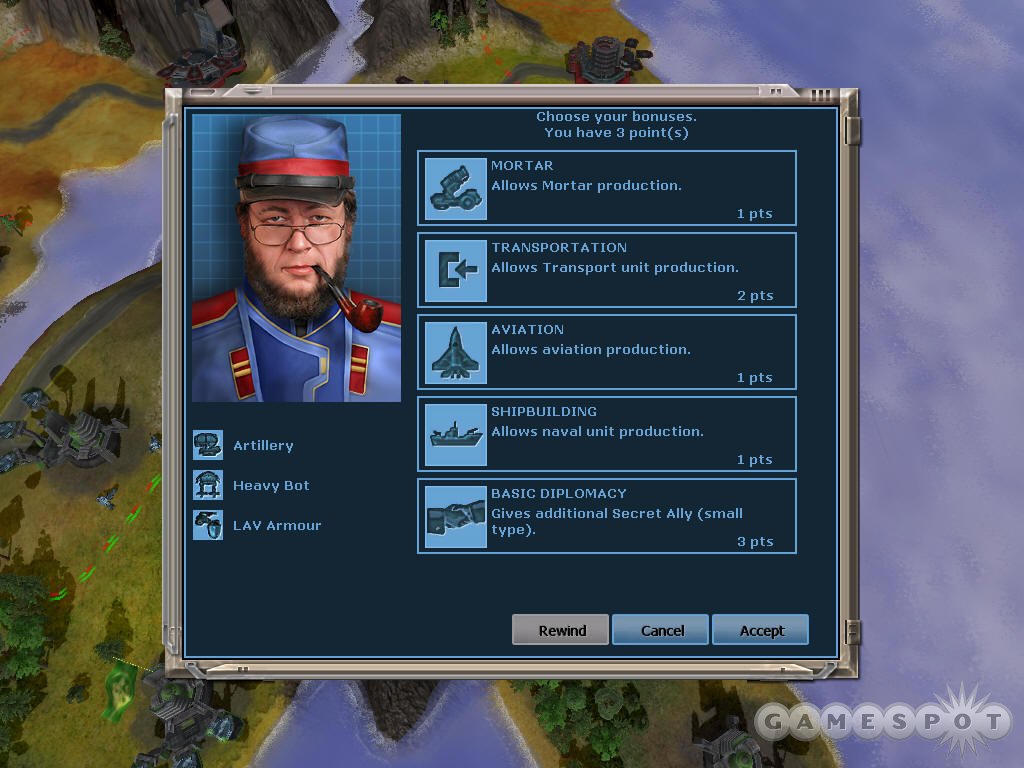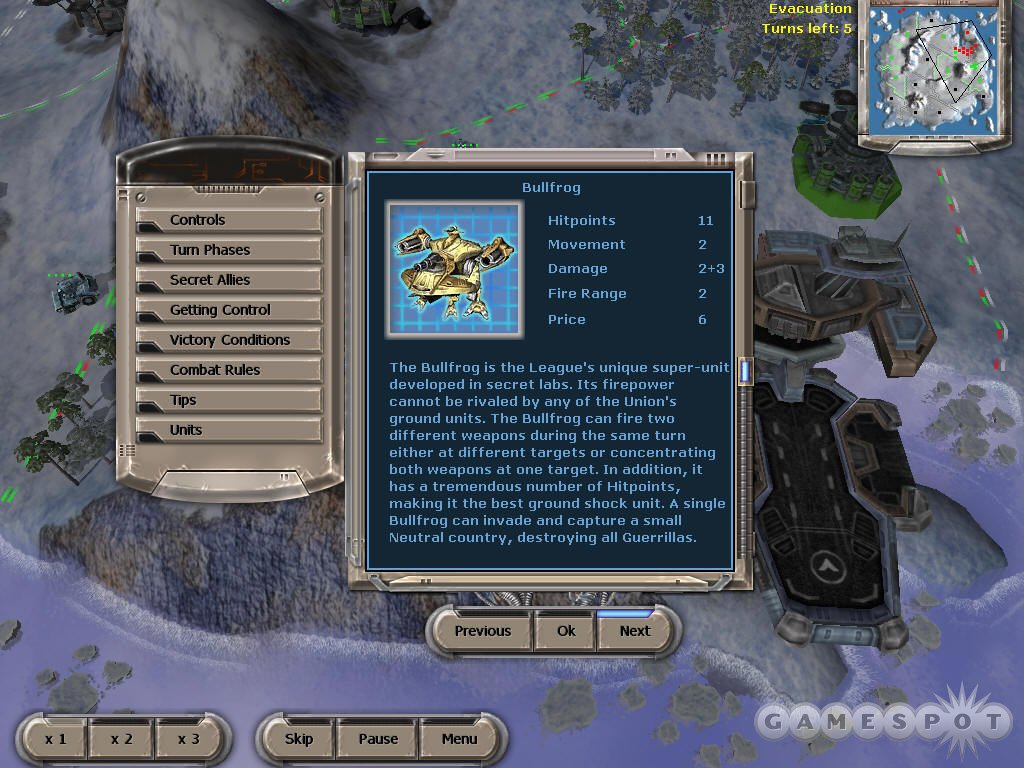They say the third time's the charm. Not with the third Massive Assault game, Domination. For one thing, Domination is in many ways the same game as its two predecessors; it feels like developer Wargaming.net keeps repackaging the same material in slightly different guises. On top of that, Domination also suffers from unpleasant flaws, including ones that have hurt the series since day one. In fact, some of those old flaws have not merely returned, but have been magnified to the point of absurdity. But despite all that, Domination still offers an engaging mix of turn-based tactics and strategy that's easy to learn and hard to master. It also offers some new units and, finally, a really good single-player experience.

Massive Assault players will get a sense of déjà vu when they first boot up Domination. It looks extremely similar to its predecessors. You'll see some new details and slicker animations, but the basic look is the same as ever, and once again, it's both pretty and pretty generic.
More importantly, the core gameplay is also the same as ever: elegant and challenging. You'll once again lead land, sea, air, and amphibious forces into battle in a sci-fi setting, struggling for control of territories and the wealth they grant. As in a hex-based wargame, each unit can move a set distance each turn, and only into discrete, fixed cells. The game takes on a chesslike feel since land units can't pass through occupied cells; you'll need to carefully orchestrate massed unit movements to get all your forces into optimum firing positions. Since each unit dishes out a fixed amount of damage with each attack, there's never any guesswork about how to blast an enemy to bits. As with movement, the fighting is all about careful planning.
To help you with that, a user-friendly interface makes it easy to see where your units can move and how far they can shoot. If you forget to employ a unit, the game will offer a friendly reminder. You can even undo moves, bringing destroyed units back to life to try a different tactic. Considering all that user-friendliness, it's ironic the game doesn't offer stronger training missions; the included ones feel perfunctory--an ongoing Massive Assault problem.
In Domination, you'll have to consider more than just the nitty-gritty of movement and combat. Each map features territories that belong to each side, but the landscape is also dotted with neutral territories and secret allies. Secret allies are territories that you can potentially reveal as friends at the time of your choosing, letting you spring major surprises and dramatically altering how battles play out on each map. Couple those considerations with guerrilla forces that can suddenly surround invading units, and territorial revenue streams that can run dry at inopportune times, and you get a smart strategic layer on top of a challenging bed of tactics.
Not only do the basic gameplay dynamics of Domination follow a familiar path, but you'll also find many returning units. Once again these core units are functionally the same for each of the game's two sides, differing only cosmetically. But you do get some new vehicles, like mobile shield generators that defend neighboring units from air attack.
Each side now gets a few unique units, too, offering new ways to pummel adversaries into submission. Take the new Bullfrog. It's a ponderous machine that can move a mere two cells per turn. What it lacks in mobility it makes up for in heavy hit points and unique firepower: It has two weapons that can target different enemies in the same turn or target the same enemy for a devastating, all-out blow. Thanks to these new side-specific units, there's finally a reason to choose one force over another.
You'll get tons of chances to try out the units. The second Massive Assault game, Massive Assault Network, added some new online multiplayer features but jettisoned most of the troubled single-player game of the first Massive Assault. Domination makes up for that by giving you a plethora of single-player options. You get a bunch of smart scenarios, full campaigns for each of the game's forces, a career mode where you buy access to units and upgrades as you progress, an assault mode where you try to conquer heavily defended bases in a set number of turns, and more. It's true that the basic gameplay is the same across all these modes, but all the same, you end up with a ton of scripted and random battles on varied maps. You can now really adjust the AI, too, so new players no longer have to submit to humiliation at the hands of a viciously efficient foe.
As welcome as the single-player offerings are, they also highlight some of Domination's big failings. Actually, they're not just big; they're staggering. The earlier Massive Assault games were content to toss out a generic bit of backstory with a smattering of clunky dialogue and leave it at that. Domination tries to rectify those flaws, but after playing for a while, you'll long for the old Massive Assault. In many of the solo modes, you'll be subjected to unimaginative and boring in-engine cutscenes of little units scampering about, as well as outlandishly amateurish interludes featuring forgettable characters, numbingly bad dialogue, and silly place names like Sushiland. Top that off with some of the most bored, halting, mispronunciation-laden voice-overs you'll ever hear, and you have a recipe for disaster. Thank goodness you can skip a lot of that junk and get right down to the gameplay.

You can also avoid the pathetic writing and voice-overs by playing against human opponents. You get a hot-seat mode, real-time LAN play, and the equivalent of play-by-email Internet play, where turns are sent to and stored on a central server from within the game. Finding opponents and sending and receiving turns is as quick and easy as ever. It would have been nice to get some team and co-op modes, though. There's a huge, nasty catch, too: You get only four months of free Internet play, and after that you'll have to start paying subscription fees.
Domination doesn't break much new ground (though its new features are certainly welcome), and it suffers from outrageously bad writing and voice-overs. Some annoying bugs and crashes further dampen the fun. While Domination isn't all it could have been, it still fills an important niche, and it still offers smart, addictive gameplay. Just be sure to skip the ridiculous dialogue and cutscenes to get right to the good stuff.